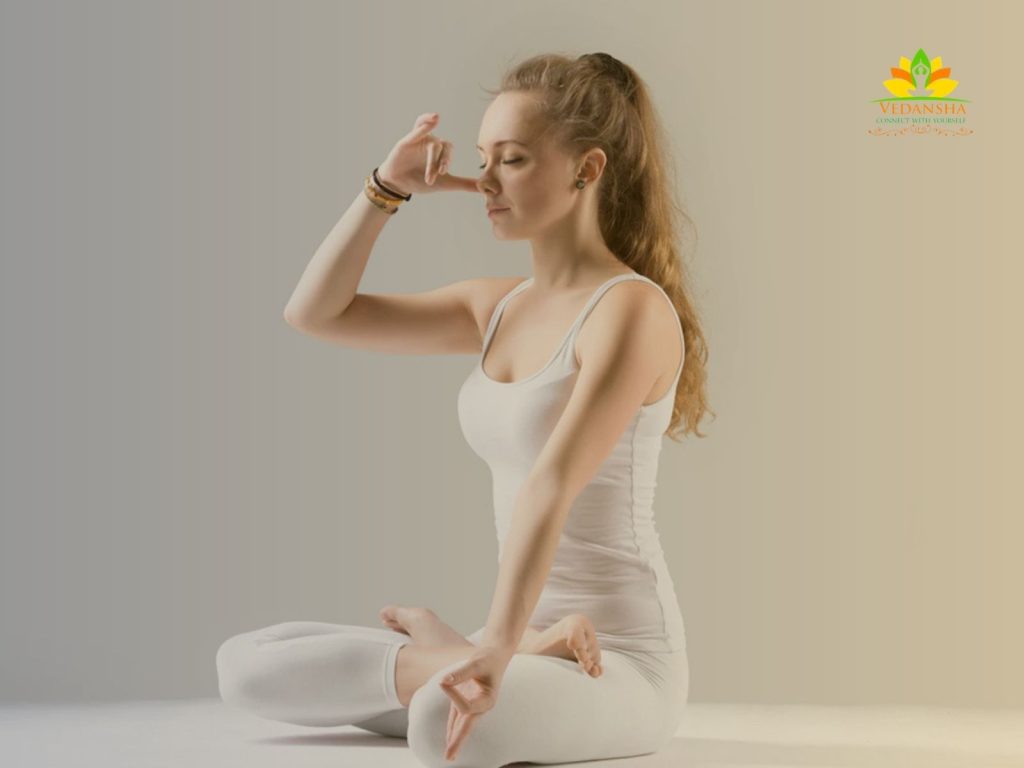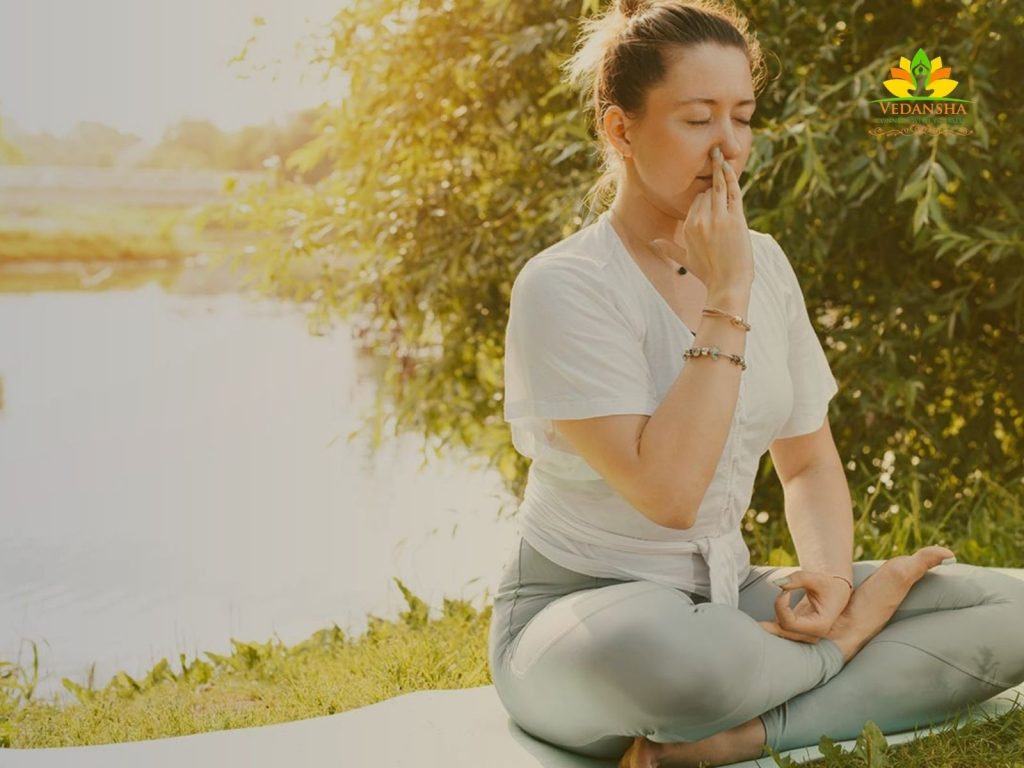
What is pranayama | Benefits & techniques
Breathing is an essential aspect of human life, providing us with the oxygen needed for our body’s functioning. However, in the realm of yoga, breathing takes on a deeper significance. Pranayama, the art of controlling and regulating breath, plays a vital role in yoga practice. It involves various breathing techniques that can significantly impact physical, mental, and spiritual well-being. In this article, we will explore the different types of pranayama and their benefits.
Introduction to Pranayama
Pranayama, derived from the Sanskrit words “prana” (life force) and “Yama” (control), is the practice of conscious breath control. It goes beyond the natural act of breathing and involves various techniques aimed at improving physical health, mental clarity, and spiritual growth. Pranayama is an integral part of yoga, alongside asanas (postures) and meditation.
The Science Behind Pranayama
The human breath is closely linked to the autonomic nervous system, which controls involuntary bodily functions. Through pranayama, we can influence this system, bringing balance to our body and mind. Deep breathing activates the parasympathetic nervous system, promoting relaxation and reducing stress.
Benefits of Pranayama

pranayama
Improved Respiratory Function
Pranayama techniques focus on expanding lung capacity, improving oxygen intake, and enhancing overall respiratory function. Regular practice can benefit individuals with respiratory conditions like asthma and bronchitis.
Stress and Anxiety Reduction
The controlled breathing patterns of pranayama help activate the relaxation response, reducing stress and anxiety. It promotes a sense of calmness and tranquility, allowing practitioners to manage their emotions effectively.
Enhanced Concentration and Mental Clarity
Pranayama practices bring attention to the breath, training the mind to focus and concentrate. This increased mental clarity and awareness can improve cognitive function and enhance productivity.
Energy Boost and Vitality
Certain pranayama techniques, such as Kapalabhati and Ujjayi, generate heat and energy in the body, revitalizing the practitioner. Regular practice can boost vitality and provide a natural energy source.
Balancing the Nervous System
Pranayama helps balance the sympathetic and parasympathetic nervous systems, leading to overall nervous system harmony. This balance positively impacts various bodily functions, including heart rate, blood pressure, and digestion.
Popular Types of Pranayama Techniques

pranayama
Pranayama encompasses several techniques, each offering unique benefits and effects on the body and mind. Here are some widely practiced pranayama techniques:
Anulom Vilom (Alternate Nostril Breathing)
Anulom Vilom, also known as Alternate Nostril Breathing, is a yogic breathing technique that involves inhaling and exhaling through alternate nostrils. The practice involves using the thumb and ring finger to close one nostril while breathing in through the other, and then switching sides to exhale through the opposite nostril.
This rhythmic breathing technique is believed to balance the flow of energy in the body, calm the mind, and improve overall well-being. It is often used as a relaxation technique to reduce stress and anxiety, enhance focus, and promote a sense of inner balance and harmony. Regular practice of Anulom Vilom is said to have numerous health benefits, including improved respiratory function, increased lung capacity, and improved oxygenation of the blood.
Kapalabhati (Skull Shining Breath)
Kapalabhati, also known as Skull Shining Breath, is a powerful breathing technique in yoga. It involves rapid, forceful exhalations through the nose while the inhalation is passive and relaxed. The technique focuses on forcefully contracting the lower belly muscles to expel air from the lungs.
Kapalabhati is believed to cleanse and purify the respiratory system, invigorate the mind, and awaken the body’s energy. Regular practice of this technique is said to improve lung capacity, increase oxygen supply, and enhance mental clarity. It is often used as a pranayama practice to energize the body, release tension, and promote a sense of vitality and rejuvenation.
Bhramari (Bee Breath)
Bhramari, also known as Bee Breath, is a calming and soothing breathing technique in yoga. It involves inhaling deeply and exhaling while making a gentle humming sound, mimicking the sound of a bee. The practice typically involves closing the eyes, covering the ears with the thumbs, and placing the index fingers lightly over the eyelids.
Bhramari is known for its ability to reduce stress, anxiety, and anger by activating the parasympathetic nervous system. The vibrations created by the humming sound are believed to calm the mind, alleviate tension, and promote a sense of inner peace and tranquility. Regular practice of Bhramari can help improve focus, enhance relaxation, and bring about a state of mental clarity and harmony.
Ujjayi (Victorious Breath)

pranayama
Ujjayi, also known as Victorious Breath, is a yogic breathing technique characterized by a soft, gentle constriction of the throat during both inhalation and exhalation. The practice involves breathing in deeply through the nose, while slightly narrowing the back of the throat to create a gentle, audible sound like the ocean or a gentle breeze. Ujjayi breath is often used during yoga asana practice to synchronize breath with movement, enhance concentration, and generate heat in the body.
It is known to promote a sense of grounding, focus, and internal awareness. Ujjayi breathing is believed to regulate the flow of prana (life force energy) in the body, calm the mind, and cultivate a sense of inner strength and stability. Regular practice of Ujjayi can help deepen one’s yoga practice, reduce distractions, and promote a meditative state of mind
Sheetali (Cooling Breath)
Sheetali, also known as Cooling Breath, is a yogic breathing technique that involves inhaling through the mouth with the tongue extended and rolled into a tube-like shape, and exhaling through the nose. The practice is typically used to cool down the body and calm the nervous system. By drawing the air in through the rolled tongue, the breath is believed to be cooled before entering the body, creating a soothing and refreshing effect.
Sheetali is especially beneficial during hot weather or when experiencing feelings of anger, frustration, or overheating. The practice is known to reduce body temperature, alleviate thirst, and bring about a sense of tranquility and relaxation. Regular practice of Sheetali can help balance the body’s temperature, calm the mind, and promote a sense of overall well-being.
Shitkari (Hissing Breath)
Shitkari, also known as Hissing Breath, is a yogic breathing technique that involves inhaling through the mouth while the tongue is curled up and pressed against the roof of the mouth, creating a hissing sound. The practice is known for its cooling and calming effects on the body and mind. As the air passes over the moist surface of the curled tongue, it is believed to be cooled before entering the lungs, offering a refreshing sensation.
Shitkari breath is often practiced to reduce body heat, alleviate thirst, and promote a sense of relaxation. It is particularly useful during hot weather or when experiencing feelings of irritability or anger. Regular practice of Shitkari can help regulate body temperature, soothe the nervous system, and cultivate a state of inner calm and tranquility.
Incorporating Pranayama into Your Yoga Practice

pranayama
Before incorporating pranayama into your yoga practice, it is important to consider a few precautions and guidelines:
- Always learn pranayama techniques from a qualified yoga instructor.
- Practice pranayama on an empty stomach or at least a few hours after a meal.
- Choose a quiet and clean environment for your practice.
- Start with beginner-friendly techniques and gradually progress to more advanced ones.
Now, let’s explore a simple step-by-step guide to practicing pranayama:
- Sit in a comfortable position with an upright spine.
- Close your eyes and relax your body and mind.
- Begin with a few deep breaths to settle into the practice.
- Choose a pranayama technique that resonates with you.
- Follow the specific instructions for that technique, focusing on the breath and maintaining a steady rhythm.
- Start with a few rounds and gradually increase the duration as you become more comfortable.
- After completing the practice, sit quietly for a few moments, observing the effects of pranayama on your body and mind.
Pranayama and Meditation
Pranayama and meditation are closely interconnected practices in yoga. Pranayama prepares the mind and body for meditation by calming the mind, enhancing focus, and removing energetic blockages. When combined, these practices deepen the meditative state, allowing practitioners to explore profound states of awareness and inner peace.
Pranayama for Stress Management
In today’s fast-paced world, stress has become a common concern for many individuals. Pranayama offers effective tools for managing stress and promoting relaxation. The rhythmic and controlled breathing patterns activate the parasympathetic nervous system, inducing a relaxation response and reducing the production of stress hormones.
Pranayama for Energy and Vitality
Feeling fatigued or lacking energy? Pranayama can be a valuable tool to rejuvenate and revitalize your body and mind. By practicing specific energizing pranayama techniques, you can activate the pranic energy within, boost vitality, and experience a renewed sense of vigor.
Pranayama and Breath Awareness

pranayama
Pranayama serves as a gateway to developing breath awareness, which is fundamental in yoga and mindfulness practices. By consciously observing the breath during pranayama, practitioners cultivate mindfulness, deepen their connection with the present moment, and develop a greater understanding of their inner state.
Conclusion
Pranayama, the art of breath control, plays a significant role in yoga practice. Through various breathing techniques, pranayama offers numerous benefits for physical, mental, and spiritual well-being. By incorporating pranayama into your yoga routine, you can enhance your respiratory function, reduce stress, improve concentration, boost energy, and achieve a greater sense of balance and harmony within yourself.
FAQs
1. Can anyone practice pranayama?
Yes, pranayama can be practiced by people of all ages and fitness levels. However, it is advisable to learn pranayama from a qualified yoga instructor to ensure proper technique and guidance.
2. How often should I practice pranayama?
The frequency of your pranayama practice depends on your personal preferences and schedule. Starting with a few minutes of practice daily and gradually increasing the duration can be beneficial. Consistency is key to experiencing the long-term benefits of pranayama.
3. Can pranayama help with respiratory conditions like asthma?
Yes, certain pranayama techniques, such as Anulom Vilom and Ujjayi, can be beneficial for individuals with respiratory conditions. However, it is important to consult with a healthcare professional before starting pranayama practice, especially if you have any underlying health conditions.
4. Can pranayama replace regular exercise?
Pranayama is a complementary practice to physical exercise. While it offers its own unique benefits, it is important to engage in regular physical activity for overall fitness and well-being.
5. Can pranayama be practiced during pregnancy?
Pranayama can be practiced during pregnancy, but it is advisable to consult with a prenatal yoga instructor or healthcare professional for guidance on suitable techniques and modifications.
No Comments
Sorry, the comment form is closed at this time.
